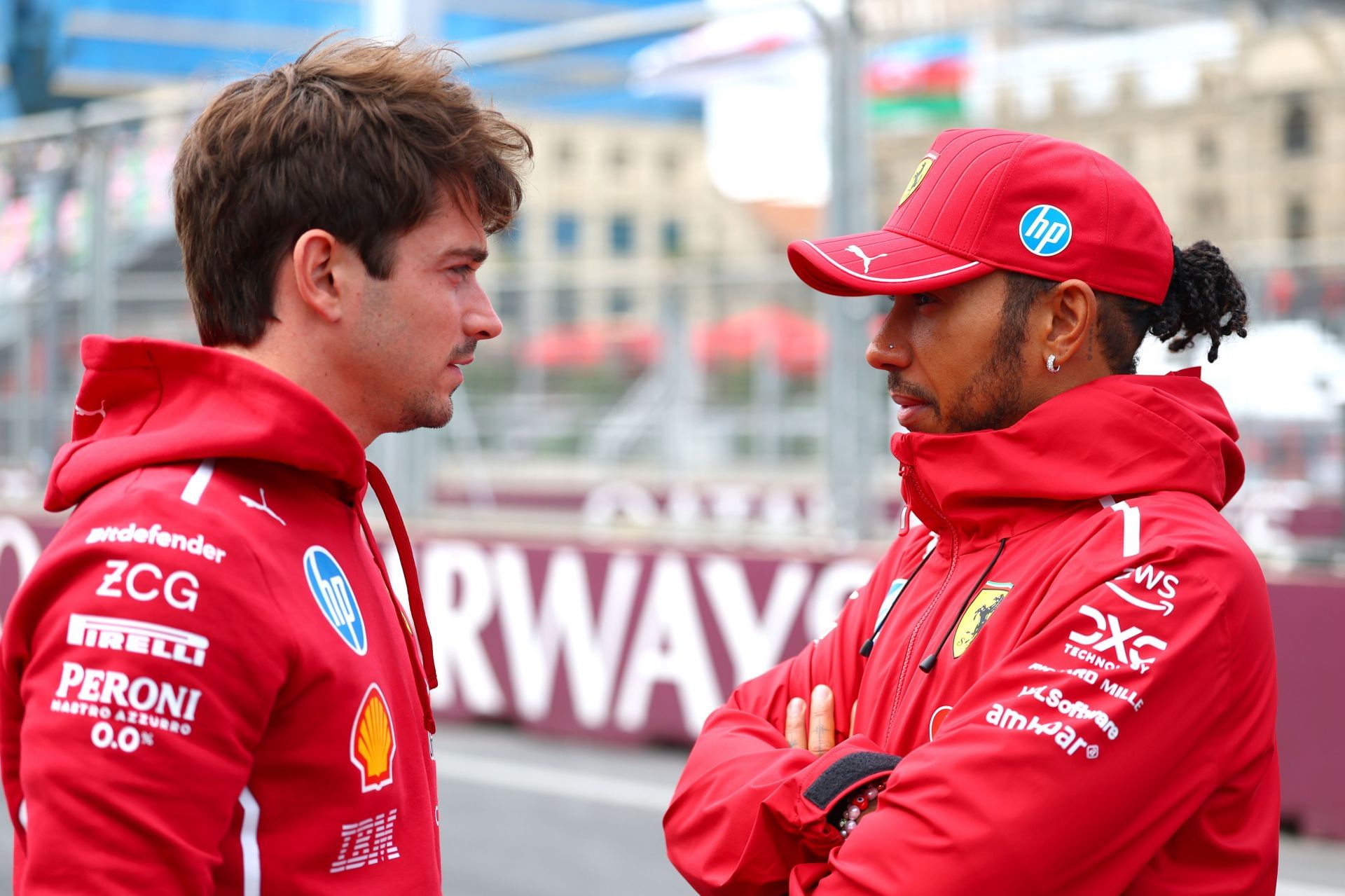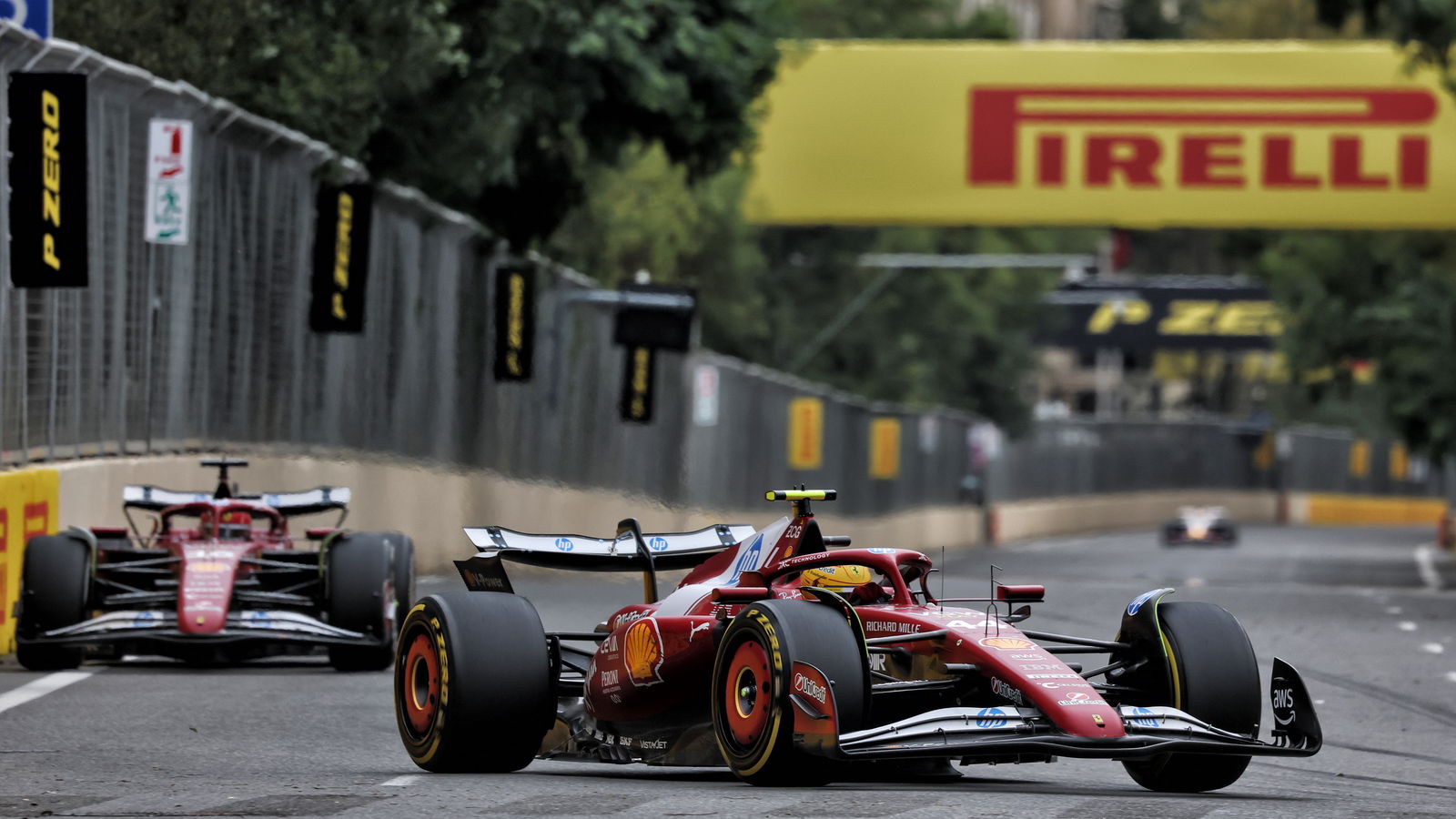The storied halls of Maranello are echoing with a tension so thick you could cut it with a knife. The prancing horse, once a symbol of Italian pride and racing dominance, now appears to be a team on the verge of a catastrophic internal collapse.
Following a disastrous Singapore Grand Prix, the dream pairing of Charles Leclerc and Lewis Hamilton is rapidly devolving into a nightmare, with shocking threats, a clash of cultures, and a car that has been deemed “finished” by its own engineers.
At the center of this firestorm is Team Principal Frédéric Vasseur, who appears increasingly powerless as the flames of discontent threaten to engulf the most iconic name in Formula 1.

The Singapore Grand Prix was supposed to be a turning point for Ferrari. Pre-race simulations had painted a picture of a competitive SF-25, a car that could finally challenge for victory on the tight and twisting Marina Bay circuit. The team arrived with a swagger, a renewed sense of optimism that this would be the weekend they finally put it all together. But that optimism was shattered before the cars even hit the track for qualifying. A fundamental flaw with the car’s floor pan forced the team into a desperate compromise, raising the ride height and completely destroying the car’s aerodynamic balance.
From that moment on, the SF-25 was a shadow of its former self. The drivers battled with chronic understeer, a lack of front-end grip, and unpredictable cornering behavior that made the car nearly undrivable. A frantic attempt to rectify the situation by changing the brake air ducts only made things worse. Leclerc’s brakes overheated halfway through the race, while Hamilton’s failed completely in the closing stages, forcing him to cut corners and incur a penalty just to make it to the finish line. Instead of fighting for the podium, Ferrari was left to pick up the scraps, finishing a dismal sixth and eighth, a result made all the more humiliating by the fact that they were outpaced by a rookie driver.
The crisis at Ferrari, however, goes far deeper than a single bad weekend. The issues that plagued the team in Singapore were not the result of a faulty setup, but rather a fundamental flaw in the car’s design philosophy. In a bold and ultimately disastrous move, Ferrari had decided to adopt Red Bull’s successful pull-rod front suspension system. The hope was that this would unlock a new level of performance, but instead, it backfired spectacularly. The new system stripped the car of one of Ferrari’s traditional strengths: its braking stability and consistency in slow corners. The SF-25 became incredibly sensitive to the slightest changes in tire temperature, wind direction, and track surface, making it a nightmare to set up and even more difficult to drive.

The desperation within the team is palpable. One Ferrari engineer was reportedly overheard saying, “This car is finished. We can’t save it.” These are words that send a chill down the spine of any Tifosi, a stark admission of defeat from within the heart of Maranello. The SF-25 development project has reportedly been halted, with the team’s focus now shifting entirely to the 2026 car and the new regulatory era. While this may seem like a logical long-term strategy, it has created a domino effect of devastating consequences in the short term. Team morale has plummeted, communication between departments has broken down, and the relationship between the drivers and the management is at an all-time low.
For Charles Leclerc, a driver who has bled Ferrari red since he was a boy, the decision to give up on the current season feels like a personal betrayal. “We were drowning in our own expectations,” he lamented after the Singapore race, his words laced with a bitter sense of disappointment. But behind the scenes, Leclerc’s disappointment has reportedly morphed into outright anger. He has allegedly urged the team to build a car that can win races, not just fight for podiums, a demand that has only served to create more friction with a technical department that feels he is being unrealistic about the car’s limitations.
Meanwhile, Lewis Hamilton, the seven-time world champion who made the bombshell move to Ferrari in search of a fairytale ending to his illustrious career, has taken a different approach. Publicly, he has been a model of composure, but behind the scenes, his methodical and driven approach is clashing with Ferrari’s more emotional and intuitive work culture. In what has been described as a clash of two worlds, Hamilton’s systematic British mindset is at odds with the passionate and spontaneous Italian philosophy that has defined Ferrari for decades.
The situation escalated dramatically when Hamilton reportedly sent a private memo to Ferrari’s senior management. The memo contained a brutal and unflinching analysis of the SF-25’s weaknesses, from its weight distribution and aerodynamic instability to its poor heat management. While some within Ferrari appreciated Hamilton’s honesty and saw it as a sign of his commitment to the team, others saw it as a direct challenge to their authority, an attempt by an outsider to change the very DNA of Ferrari.

With the team in disarray, the patience of both drivers is wearing thin. Leclerc’s manager, Nicholas Todt, has reportedly begun exploring other options for the Monegasque driver, with teams like McLaren, Mercedes, and Aston Martin all waiting in the wings for the slightest indication that he is ready to jump ship. Ferrari, in turn, has been forced to draw up contingency plans, with the surprising name of Oscar Piastri being floated as a potential replacement.
Hamilton, too, is growing increasingly anxious. Time is not on his side, and the dream of ending his career on a high with a historic victory for Ferrari is beginning to look more and more like a distant fantasy. The chaos and infighting at Maranello are a far cry from the well-oiled machine he was used to at Mercedes, and the clock is ticking on his chances of securing that elusive eighth world title.
In the midst of this escalating crisis, Frédéric Vasseur appears to be a man adrift. Sources within the team claim that he lost control of the situation after the Singapore Grand Prix, caught between the wrath of the Tifosi and the internal threats from his two-star drivers. “I don’t have a magic wand,” he admitted in a moment of startling honesty. “We need time, but time is something we don’t have right now.” The Italian media has been scathing in its criticism, with one outlet declaring that “Vasseur is no longer a leader, but a victim of Ferrari’s own system.”
The pressure on Vasseur is now immense. With the drivers losing faith, the team divided, and the confidence of the fans at its lowest point in decades, his position is becoming increasingly untenable. Emergency meetings have been held, and there are whispers that Ferrari’s board of directors is already considering a replacement if the team’s performance doesn’t improve dramatically in the coming races. The symbol of Italian pride now resembles a mighty ship that has lost its compass in a storm, and the question on everyone’s lips is who will be the first to abandon ship. Will Frédéric Vasseur still be at the helm when the season comes to an end, or will he be another casualty in the long and often brutal history of Ferrari’s Formula 1 turmoil? The answers remain to be seen, but one thing is certain: the drama at Maranello is far from over.